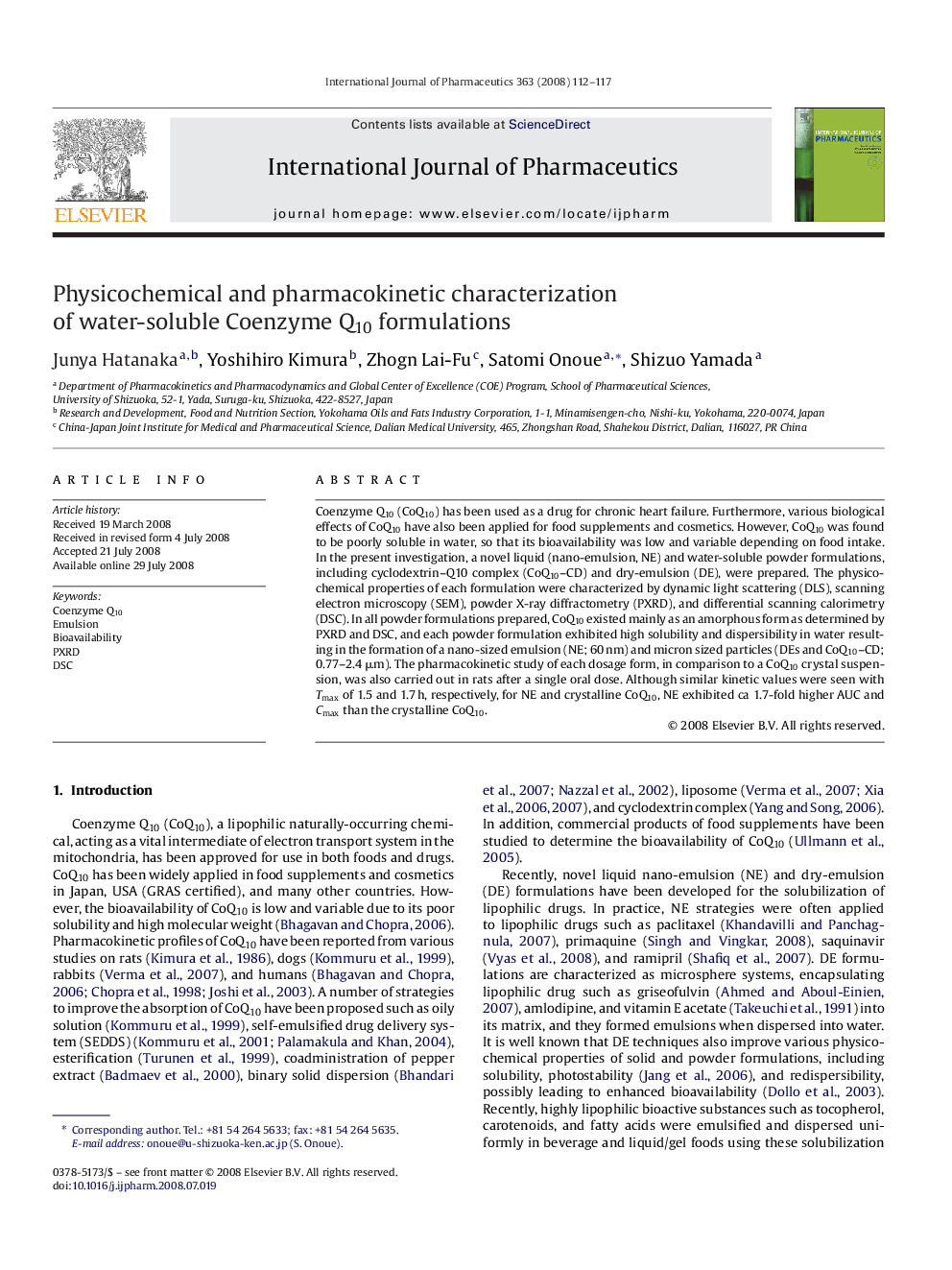| Article ID | Journal | Published Year | Pages | File Type |
|---|---|---|---|---|
| 2505206 | International Journal of Pharmaceutics | 2008 | 6 Pages |
Coenzyme Q10 (CoQ10) has been used as a drug for chronic heart failure. Furthermore, various biological effects of CoQ10 have also been applied for food supplements and cosmetics. However, CoQ10 was found to be poorly soluble in water, so that its bioavailability was low and variable depending on food intake. In the present investigation, a novel liquid (nano-emulsion, NE) and water-soluble powder formulations, including cyclodextrin–Q10 complex (CoQ10–CD) and dry-emulsion (DE), were prepared. The physicochemical properties of each formulation were characterized by dynamic light scattering (DLS), scanning electron microscopy (SEM), powder X-ray diffractometry (PXRD), and differential scanning calorimetry (DSC). In all powder formulations prepared, CoQ10 existed mainly as an amorphous form as determined by PXRD and DSC, and each powder formulation exhibited high solubility and dispersibility in water resulting in the formation of a nano-sized emulsion (NE; 60 nm) and micron sized particles (DEs and CoQ10–CD; 0.77–2.4 μm). The pharmacokinetic study of each dosage form, in comparison to a CoQ10 crystal suspension, was also carried out in rats after a single oral dose. Although similar kinetic values were seen with Tmax of 1.5 and 1.7 h, respectively, for NE and crystalline CoQ10, NE exhibited ca 1.7-fold higher AUC and Cmax than the crystalline CoQ10.
